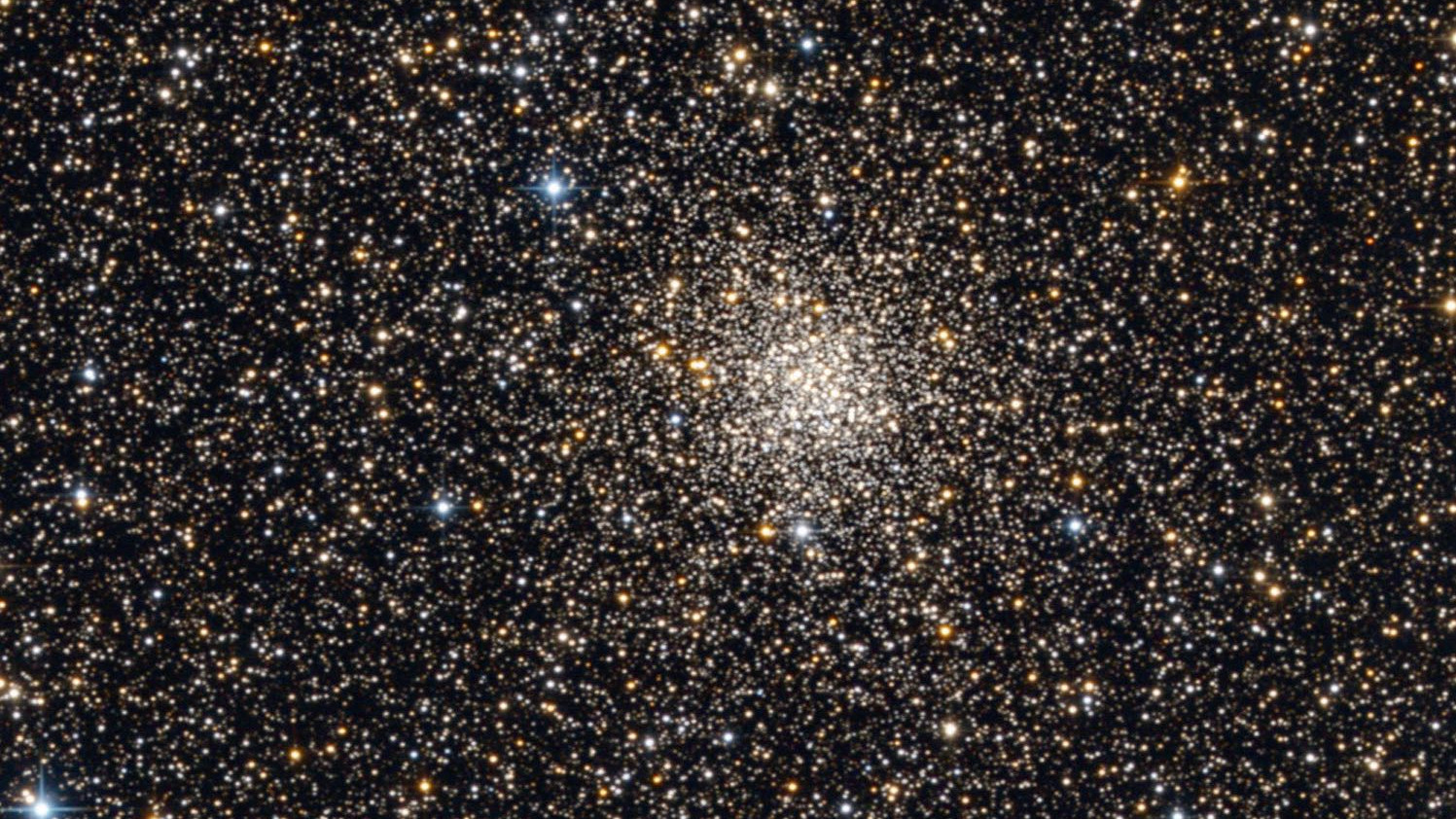Messier 71, the loose globular cluster
This globular cluster in Vulpecula could easily also pass as an open cluster – a beautiful target embedded in the Milky Way.
 The globular star cluster Messier 71 captured with a 12-inch Newtonian telescope. Bernhard Hubl/CCD Guide
The globular star cluster Messier 71 captured with a 12-inch Newtonian telescope. Bernhard Hubl/CCD GuideBelow the striking summer constellation of Cygnus is the pretty little constellation of Sagitta with the globular cluster Messier 71. To find the globular cluster, either position your finder directly in the middle between the stars γ and δ Sge or go from the central star δ Sge 1.2° east to a chain of stars that includes a magnitude 6 star. The globular cluster M71 is located about 15' east of this chain.
The Swiss mathematician and astronomer Philippe Loys de Chéseaux discovered the globular cluster in 1746. Pierre Méchain independently found it on 28 June 1780, and on 4 October 1780 it was added to Messier's catalogue.
Globular cluster or open cluster?
 Drawing of Messier 71 produced with a 14-inch Newtonian at 114 times magnification. Oliver Stein
Drawing of Messier 71 produced with a 14-inch Newtonian at 114 times magnification. Oliver SteinMessier 71 is 37 light years across and around 13,000 light years from Earth. It looks unusually loose for a globular cluster, which is why its classification was unclear for a long time. Its composition more resembled that of an open cluster and it is also not a typical globular cluster object within the galactic halo. However, due to its age of twelve billion years and the low incidence of elements heavier than helium (metallicity), it was classified as a globular cluster.
More triangular than round
With 50-mm binoculars under clear country skies, Messier 71 looks like a small diffuse nebulous speck located within the summer Milky Way. The first stars in the cluster can be resolved using a telescope with an aperture of 10 cm or more. From a 20-cm aperture, it looks unevenly loose and hardly gets any denser toward the centre.
From an aperture of 30 cm, an arrow shape is revealed in the centre of the cluster. This globular cluster does not appear round, but rather triangular and fan-shaped. Its tip points to the south-west. The higher the magnification, the fewer stars the cluster seems to have, and the cluster barely becomes brighter toward the centre. At least 150 individual stars are visible, which merge with the summer Milky Way.
The most beautiful view is with a magnification of between 50 and 100 times. Under dark country skies and good seeing, however, you can experiment with even higher magnifications.
Astrophotographers can capture Messier 71 even with a 500-mm telephoto lens, as the globular cluster is rather loose and without a concentration of central stars. However, photographs only become really impressive with longer focal lengths of 3,000 mm or more and a long exposure time. Then the multitude of red stars and the spherical character of the cluster emerge.
 Finding chart of Messier 71 in the constellation of Sagitta. J. Scholten
Finding chart of Messier 71 in the constellation of Sagitta. J. ScholtenAuthor: Michael Feiler / Licence: Oculum-Verlag GmbH
